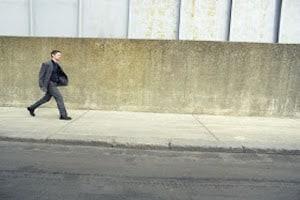for Over 25 Years
Sidewalk Accident Claims in California

Sidewalk accident claims in California happen with too much frequency and can cause great bodily harm even at low-impact. This is especially true in urban areas like Los Angeles, Orange County and the Inland Empire. The repercussions of a vehicle-pedestrian crash on a sidewalk can be serious for the pedestrian, who may suffer serious injuries, even if the collision occurred at a slow speed. Accident impact studies show that most vehicles hit walkers and runners on the side, and about 75 percent of these impacts happen at speeds of 25 mph or slower.
There are different types of interactions that can occur between a vehicle and an individual upon impact, and the individual could suffer one or more of various injuries. It might be necessary for you to understand these interactions and potential injuries if you live in Los Angeles and do a lot of walking around the city.
Common Vehicle-Pedestrian Crash Injuries
The leading cause of death for individuals who are hit by cars is head injury. These may involve lacerations on the scalp, concussions, skull fractures, intracranial swelling, hematomas and hemorrhages. When a person’s head hits a hard surface, such as the hood of the vehicle or the windshield, traumatic brain injury may occur. It could also happen during secondary contact with objects in the area or the ground.
Leg injuries are the most common disabling injuries. These include torn knee ligaments; pelvis or hip fractures; femur, tibia and fibula fractures; and soft tissue injuries such as lacerations and abrasions. Crashes that involve trucks, SUVs and vans are more likely to cause severe torso injuries, and the most common mild and moderate torso injuries are damage to the ribcage, lungs and liver.
Types of Vehicle-Pedestrian Impact Interactions
The most common interaction that occurs during vehicle-pedestrian crashes is forward projection, which usually involves the driver braking before or during the initial impact. The individual’s body accelerates a percentage of the speed of the vehicle. While the vehicle slows down when the driver hits the brakes, the pedestrian does not, causing the forward projection ahead of the vehicle.
If the driver does not hit the brakes or make evasive maneuvers, a roof vault interaction occurs, sending the walker or runner over the hood and onto the ground behind the vehicle. This usually happens when the front bumper of the vehicle is lower than the individual’s center of gravity, which is around the belly button.
Another interaction is the vehicle dragging or running over the walker or runner. This often happens when the front bumper of the vehicle is higher than the individual’s center of gravity. The impact of the crash typically knocks down the individual, and the vehicle passes completely or partially over. However, the walker or runner could be dragged before falling to the ground. It is more common for such accidents to occur at slow speeds.
When the impact of a vehicle-pedestrian crash is more on the side of the vehicle, the interaction might be a fender vault, which involves the walker or runner going over the fender. Such a collision usually ends with the individual landing behind or to the side of the vehicle.
CA Laws Regarding Vehicles Driving on Sidewalks
If you were involved in a vehicle-pedestrian crash in Los Angeles, you could have a case for personal injury under the California Vehicle Code. According to California Vehicle Code 21663, drivers cannot operate or move vehicles onto sidewalks unless it is necessary for them to do so to enter or exit a property. When driving on walkways is necessary, the California Vehicle Code 21952 states that the drivers must yield to any pedestrians.
Claims Against Property Owner for Sidewalk Defects
The second most common way people are injured on sidewalks is when the walkway is poorly maintained and has some type of a dangerous condition that causes a risk of harm to individuals using the sidewalk in a reasonably foreseeable way. For example, if a property owner has allowed the sidewalk to become cracked or raised over time from heavy use, tree roots pushing up the slabs, or other similar causes, they may be found liable for a person walking who trips and falls. This would be a premises liability claim. If the property where the walkway is located on private property, the owner may be found liable for failure to make reasonable inspections of the area, repair the defect, and/or warn people of the condition. If the property is a public sidewalk, the case is more difficult. Unfortunately, public entities have more protections against these types of claims (e.g. they can claim that the defect was “trivial” as a matter of law) and a much shorter “statute of limitations” (i.e. the normal time deadline for filing a claim is 2 years from the date of the accident but, a claim against a City or other public entity must be filed within 6 months and then there are strict time deadlines after that).
Importance of Retaining Legal Counsel to Assist in Auto v. Pedestrian Sidewalk Collisions
Drivers who violate these codes may be charged with reckless or negligent driving. Furthermore, they may subject themselves to legal liability in the California civil justice system due to violation of statute or simple negligence. In addition, property owners may be found liable for medical expenses and other damages but, a thorough analysis must be done on ownership and liability. Steven M. Sweat, Personal Injury Lawyers, APC has been helping the victims of pedestrian mishaps for two decades in Southern California including Los Angeles, Orange County, San Diego and the Inland Empire. Contact us to review your case if you have suffered injuries because of a driver’s recklessness or negligence:
Toll Free 24 hour 7 days a week pedestrian injury helpline: 866-966-5240












